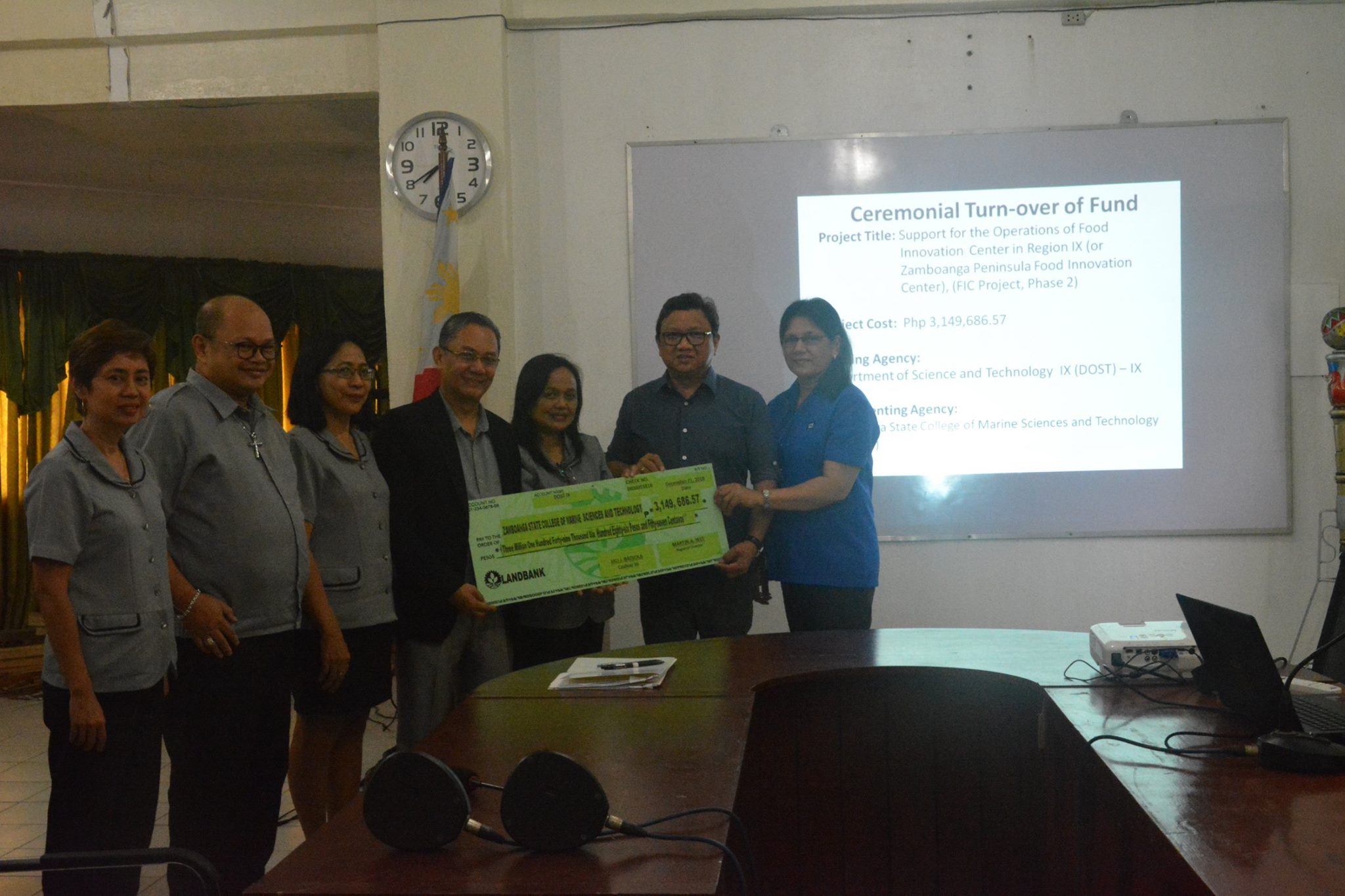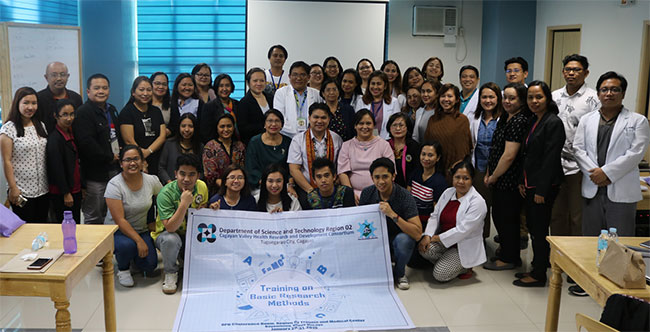The Department of Science and Technology-Regional Office IX (DOST-IX) and the Zamboanga State College of Marine Sciences and Technology (ZSCMST) had pledged support for the continuous operations of Zamboanga Peninsula Food Innovation Center or ZPFIC (otherwise known as FIC-9) through the inking of another Memorandum of Agreement (MOA) for the Project entitled “Support for the Operations of Food Innovation Center in Region IX (or Zamboanga Peninsula Food Innovation Center), (FIC Project, Phase 2)”. Through this new project MOA, a cheque amounting to Three Million One Hundred Forty-nine Thousand Six Hundred Eighty-six Pesos and Fifty-seven Centavos (P3,149,686.57) has been turned over by Dir. Martin A. Wee (DOST-IX Regional Director) to Dr. Jaime G. Jalon (ZSCMST President) on January 29, 2019 at the Conference Room, ZSCMST Administration Building, Rio Hondo, Zamboanga City. This helps ensure that the tremendous momentum gained by the ZPFIC since its inception in June 2016 will be sustained.
The ceremonial MOA signing and turning over of fund was witnessed by the DOST-FIC Focal Person, Ms. Jovita Amparo (DOST-IX SRS II), and key officials of the ZSCMST, to wit: Dr. Catalina P. Martinez (VP for Academic Affairs), Dr. Servando Halili (Executive Director for Research and Extension); Mr. Alvin Reyes (Chief Administrative Officer); Ms. Irma Pamplona (Head, Cashier’s Office); Prof. Divinia U. Ramillano (ZPFIC Manager and Project Leader), Ms. Mary Flordiluna A. Guisada (ZPFIC Assistant Manager) and Ms. Margarete T. Camins (ZPFIC Production Supervisor).
The ZPFIC was established in June 2016, which marked the start of the delivery of the DOST-developed equipment (i.e., spray dryer, vacuum fryer, freeze dryer and water retort) and other complementary equipment and support facilities. Upon complete delivery of the major equipment, it was formally launched on February 16, 2017, with DOST Secretary Fortunato Dela Peña, DOST USEC (and former Region IX Director) Brenda L. Nazareth-Manzano, and Zamboanga City First District Representative, Rep. Celso L. Lobregat, as guests of honor. The first two (2) years of operation of the ZPFIC was also supported by the DOST-IX through a grant-in-aid (GIA) fund of Three Million Three Hundred Nineteen Thousand Three Hundred Eighty-seven Pesos and Fifty Centavos (P3,319,387.50). On the other hand, the ZSCMST also provided counterpart funding and regular personnel aside from the P2M newly renovated building that houses the ZPFIC. Further, another newly renovated building (P8M) will be utilized for the Project (Phase 2) implementation in 2019, which shall be marked with intensive product development and profiling, and short-term trainings, among others.
To date, there are seventeen (17) food innovation centers (FICs) that have been established by the DOST in various regions in the country since 2014 through the national project rollout of the DOST-developed HITS (High Impact Technology Solutions) equipment through the FICs. Other complementary equipment, tools and instruments were also provided by the DOST to the FICs which, in turn, are mandated to help address the pertinent food innovation or product and process development needs of the region’s food-based micro, small and medium enterprises (MSMEs), primarily through the use/rental of DOST-developed/fabricated equipment and other FIC equipment, provision of technical assistance, and other services. Student- and faculty-researchers in the host-college/university and other academic institutions can also avail of the services of the FICs. # (D.U. Ramillano, ZPFIC)







